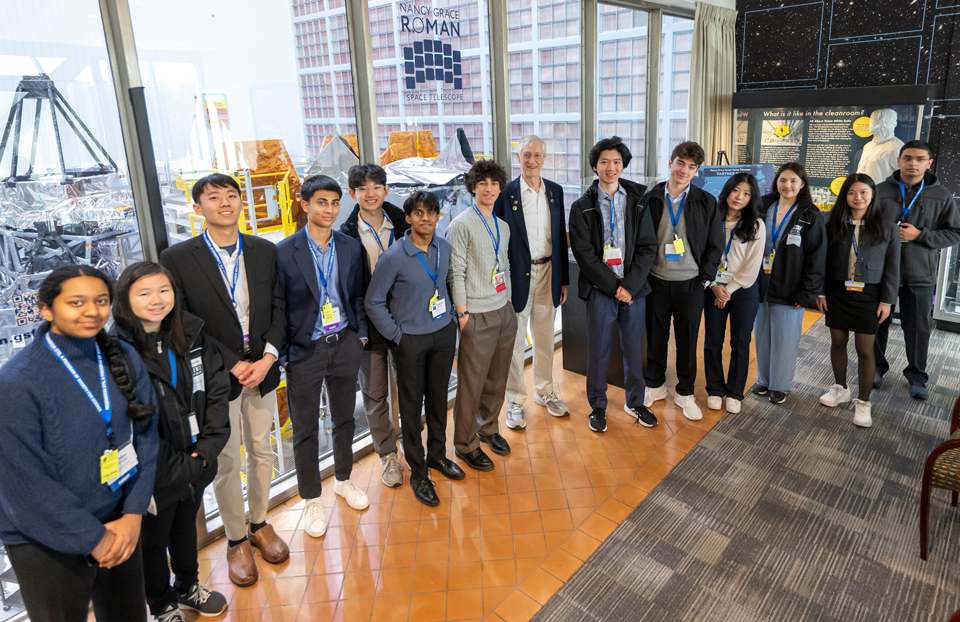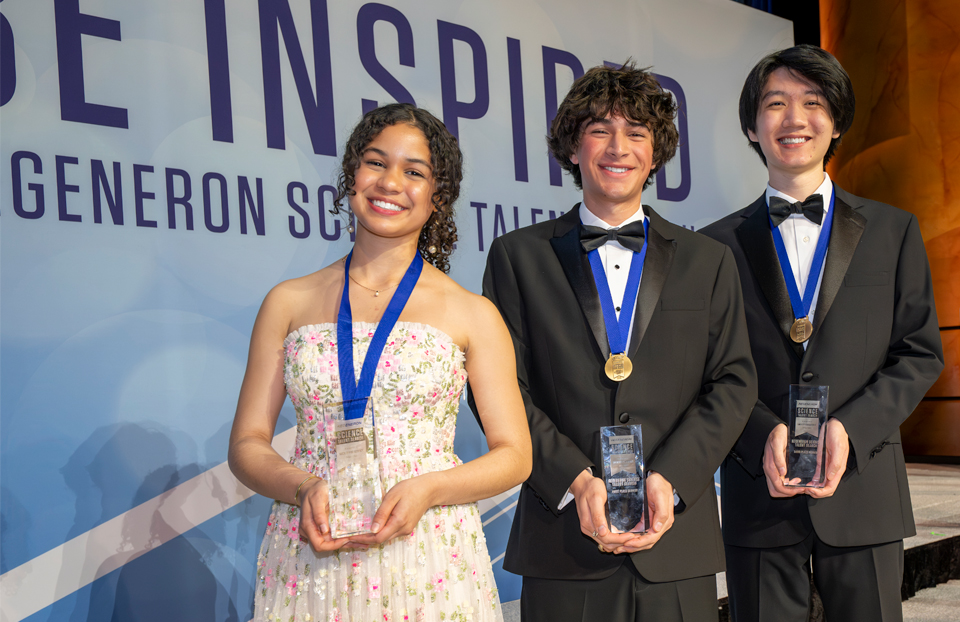Spend Pi Day with 40 of the nation’s most promising young scientists
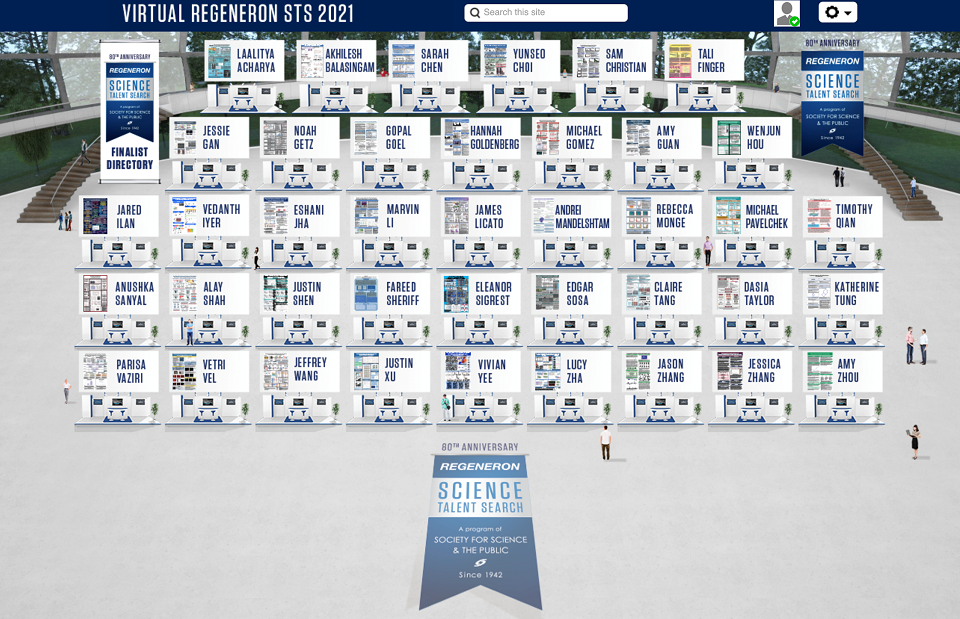
Don’t have plans for Pi Day? How about spending it with the Regeneron Science Talent Search 2021 finalists?
This upcoming Sunday, March 14, each finalist will be at their virtual booths for the Public Exhibition of Projects and available to answer questions from 2-4pm ET. Their research spans a wide range of STEM topics, including possible therapies for neurodevelopmental disorders, plant-based scaffolds for cultured meat production and using machine learning to better control traffic lights. Learn more about five of the 40 finalists and their projects below.
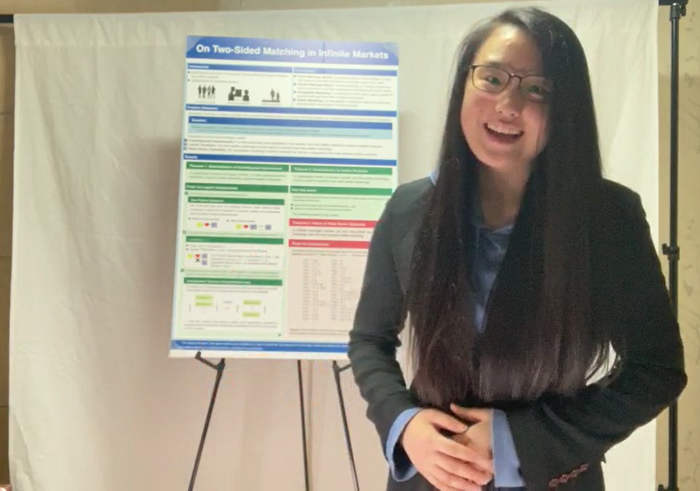
Yunseo Choi, 18, of Exeter, New Hampshire, studied properties of finite matching algorithms and helped deduce which of them applied to problems with an infinite number of potential partners. To do this, she used arguments from formal logic, combinatorics and traditional economics. “Matching theory has many real-life applications, such as doctors to residencies through the National Resident Matching Program and U.S. Military Academy cadets to military branches,” Yunseo explained. “The importance of a fair, efficient and robust matching system cannot be overstated.”
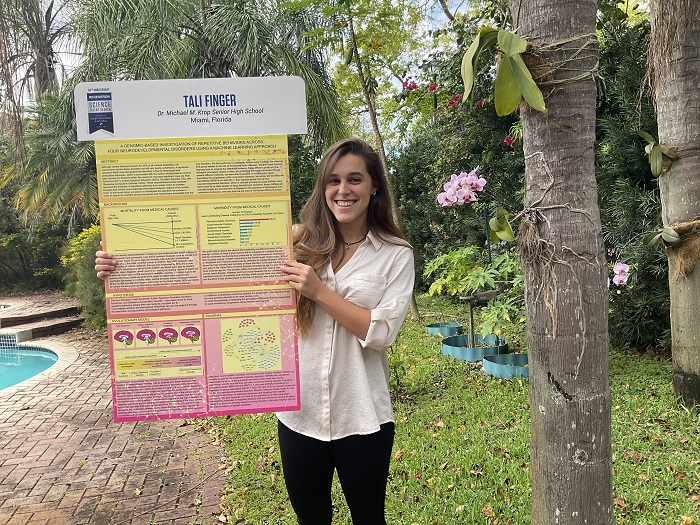
Tali Finger, 18, of Miami, Florida, modeled four neurodevelopmental disorders, depicting them together as a spectrum of behaviors rather than discrete illnesses. She described a range of symptomatic behaviors, from simple repetitive motions to complex cognitive compulsions, and used machine learning to identify groups of microRNAs that control genes throughout the defined spectrum. “A patient diagnosed with obsessive-compulsive disorder (OCD), for example, might have more in common with an individual with autism than with another OCD patient,” Tali explains. “By identifying molecules that control the mechanisms that cause repetitive symptoms, I am opening the possibility for therapies to treat different neurodevelopmental disorders by editing such molecules.”
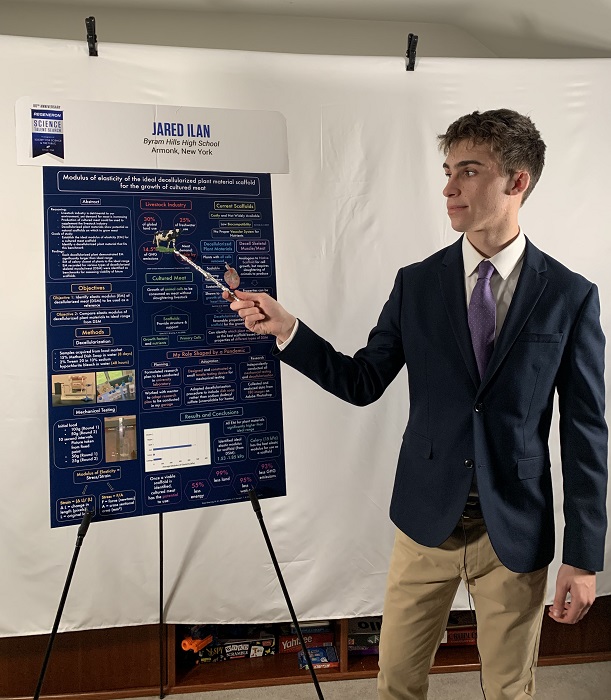
Jared Ilan, 17, of Pleasantville, New York, explored the potential of decellularized plant-based scaffolds for cultured meat production. He developed a homemade tensile testing device to study organic materials he decellularized with dish soap. By measuring the modulus of elasticity of decellularized skeletal muscle, he found the ideal mechanical properties for a cultured meat scaffold and then compared the results with decellularized cabbage, celery and kale. Jared hopes his research could help supply people with affordable and ecologically sound meat products. “Cultured meat can mitigate the detrimental effects of the livestock industry on our environment and play a role in sustainably feeding the world,” he said.
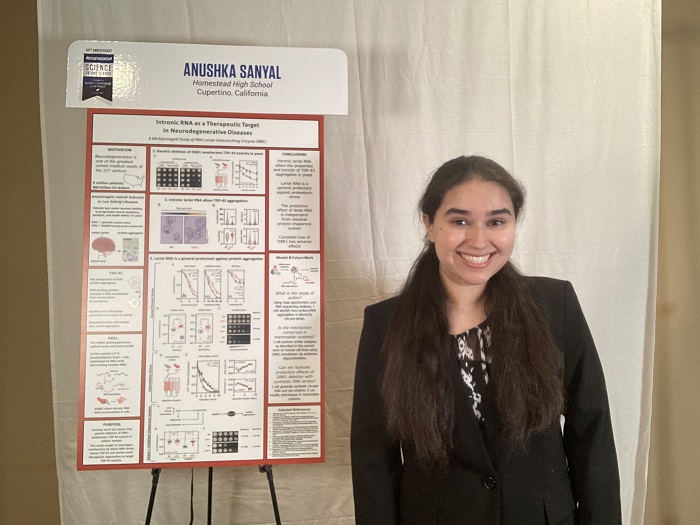
Anushka Sanyal, 17, of Los Altos, California looked at the use of RNA to treat amyotrophic lateral sclerosis (ALS). Since a key driver of ALS is the aggregation of RNA binding proteins, she reasoned that RNA might be used to counteract it. “For my project I investigated how knocking out a unique gene called Dbr1 modifies these proteins so that their effects on a cell are less toxic,” she explained. As a volunteer in a memory support center for seniors, Anushka has seen the devastating effects of neurodegenerative diseases and hopes to make a difference. “I want to pursue a degree in neuroscience and become physician or researcher in the future.”
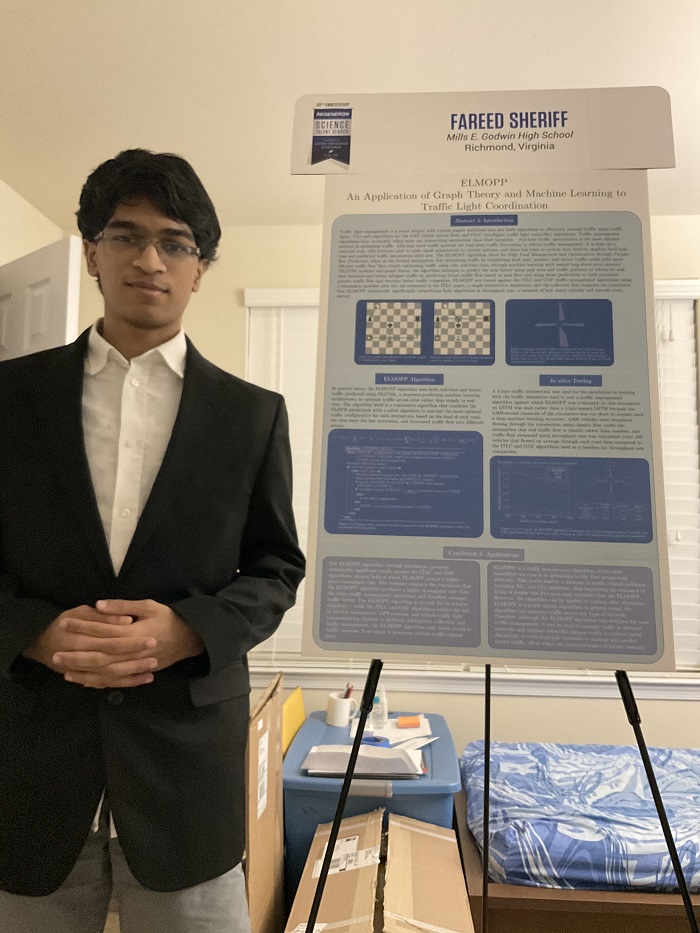
Fareed Sheriff, 17, of Glen Allen, Virginia, used machine learning and graph theory to model traffic flow at intersections and created an algorithm to better control traffic lights. His algorithm relies on data from commonly installed traffic cameras and can be easily applied to intersections without the need for new equipment or tearing up the road. Fareed’s research was motivated by his father’s complaints about badly timed red lights. “Just like a chess player who thinks multiple moves ahead, my project predicts future traffic and uses those predictions to optimize traffic across time rather than just in the present,” he said. And speaking of chess, Fareed is most proud of his 2200 tactics rating on Chess.com.
Register today to join us for the virtual Public Exhibition of Projects on March 14 and be sure to watch the Awards Ceremony on March 17!
